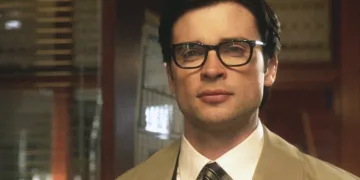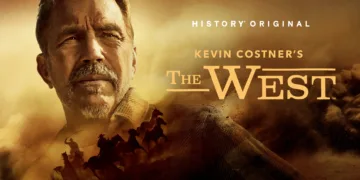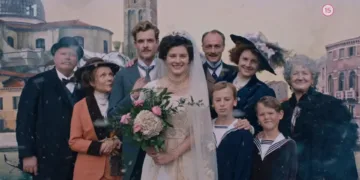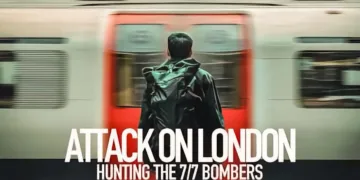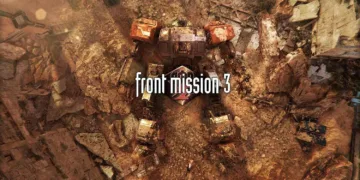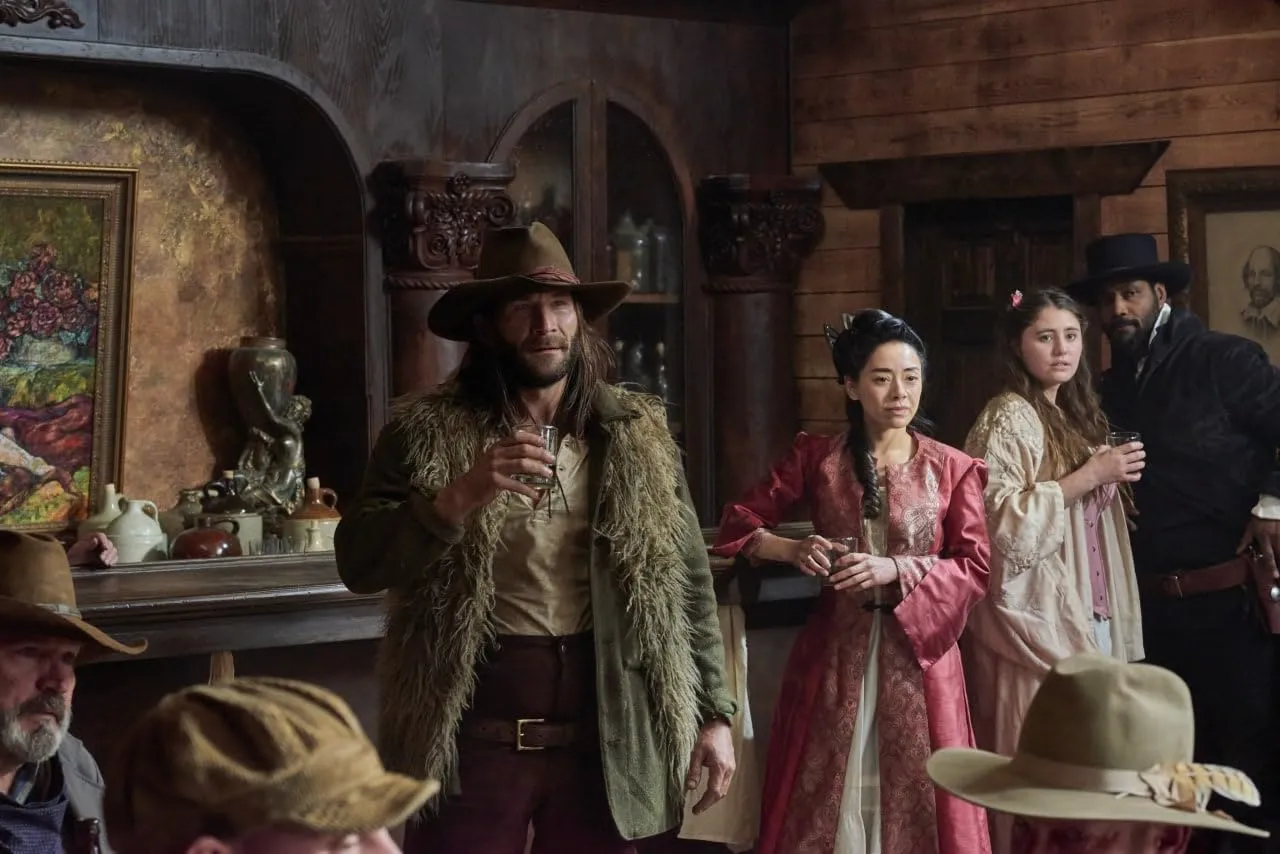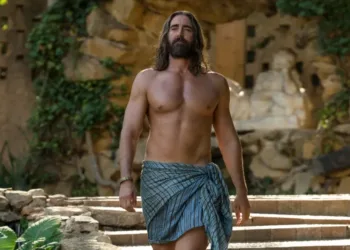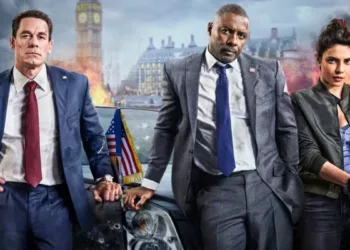Every frontier town in the cinematic imagination exists as a promise, usually one of wealth or reinvention. Yellowstone City in 1881 offers a more modest proposal: a place to be left alone. It is a town after the boom, a sanctuary of last resort populated by a disparate collection of souls who have found common ground in their shared lack of options.
The setting feels less like a celebration of manifest destiny and more like a quiet admission of its failures. Into this fragile stasis comes a spark of hope, that old Western cliché—a prospector strikes gold. Prosperity seems poised for a comeback. Then he is promptly shot dead.
So begins the film’s central conceit, a kind of Agatha Christie in a Stetson. The mechanism of justice, already rickety, requires a scapegoat. It finds one with almost comical speed in Cicero, a newly arrived former slave whose presence and poise make him the perfect outsider on whom to pin the crime. The search for gold is immediately replaced by a hunt for a killer, or at least, for someone who looks the part.
Parables and Pistols
The film populates its dusty streets with walking archetypes, each concealing a secret. There is the accused, Cicero, a man of profound dignity and Shakespearean eloquence who stands as a stark rebuke to the barbaric simplicity of the accusation against him.
His primary antagonist is not a cackling villain but something far more recognizable: a bureaucrat of violence. Sheriff Ambrose is a man for whom justice is an administrative task. The truth is a secondary concern to the primary function of his job, which is to maintain order and provide the townsfolk with a satisfying, and swift, resolution. He represents the system’s preference for a clean narrative over a messy reality.
Opposing this institutional inertia are the town’s unlikely investigators, Preacher Thaddeus and his wife, Alice. She provides the moral impetus, while he supplies the story’s central contradiction: a man of God whose past has clearly given him an intimate proficiency with sin, forensics, and firearms. He is a reluctant detective, forced to dig up his own history (and a few bodies) to find the truth.
They exist within a carefully constructed tableau of tolerance—a gay couple runs the saloon, a Lakota woman manages the stables—that feels almost too perfect. This curated utopia is a powder keg waiting for a match, a community whose progressive ideals are about to be tested by fear.
The Spectator’s Burden
The narrative proceeds at a pace that could be generously described as deliberate. It takes its time. Sheriff Ambrose’s premature verdict forces Preacher Thaddeus down a path of clandestine inquiry, a series of actions that pit his faith against the town’s law. As he uncovers clues, the body count inconveniently rises, and the killer, a shadowy figure, continues to operate with impunity. The town’s anxiety deepens.
Then the film makes a peculiar structural choice. About two-thirds of the way through, it reveals the murderer’s identity to the audience. This decision radically alters the experience. The picture ceases to be a whodunnit and becomes something else, a tense exercise in dramatic irony. The question is no longer “who is the killer?” but “how will this awful truth come to light, and what will be the cost?”
We, the spectators, are burdened with the knowledge, forced to watch the characters move toward a confrontation whose terrible specifics are already known to us. The film shifts from a puzzle to be solved into a tragedy to be witnessed.
Salvation in Gunsmoke
The slow burn of the mystery finally gives way to a conflagration. The film’s intellectual and moral questions are resolved, as they so often are in the West, with a town-wide shootout. The action is frantic and brutal, a chaotic release of all the story’s pent-up tension.
It is here that Preacher Thaddeus fully accepts his past, finding a grim purpose not in scripture but in the precise application of violence. His conflict is settled with gunpowder; his path to saving the innocent is paved with the bodies of the guilty.
When the smoke clears, the truth has been revealed. But the community it was meant to restore lies in ruins. The film leaves us with a potent and unsettling idea: that the unearthing of a dark secret can be just as destructive as the secret itself.
Yellowstone City sought a killer and found one, but in the process, it may have lost its soul. What remains is a collection of survivors standing in the rubble of their fragile society, left to ponder the impossibly high cost of justice.
Murder at Yellowstone City Released on June 24, 2022 in limited U.S. theaters, it became available digitally the same day—on platforms like Prime Video, Apple TV, Vudu—and hit DVD and Blu‑ray on August 23, 2022.
Full Credits
Director: Richard Gray
Writer: Eric Belgau
Producers and Executive Producers: Richard Gray, Rob Menzies, Lisa Wolofsky, Kelly Frazier, Anjul Nigam, Julie Stagner, Colin Floom, Brian David Cange (producers); Carter Boehm, Veronica Ferres, Courtney Lauren Penn, James Norrie, Inderpal Singh (executive producers)
Cast: Gabriel Byrne, Thomas Jane, Isaiah Mustafa, Anna Camp, Richard Dreyfuss, Nat Wolff, Aimee Garcia, Zach McGowan, Emma Kenney, Scottie Thompson, Tanaya Beatty, John Ales, Lew Temple, Lia Marie Johnson, Jenna Ciralli, Isabella Ruby, Danny Bohnen
Director of Photography (Cinematographer): John Garrett
Editor: Joe Mitacek
Composer: Mel Elias
The Review
Murder at Yellowstone City
"Murder at Yellowstone City" is an ambitious, if ponderous, genre experiment that uses a classic Western whodunnit as a framework to explore weighty ideas about justice and community. While its deliberate pacing may test some viewers, the film’s structural choice to reveal its villain early transforms it into a compelling, if bleak, study of dramatic irony. Supported by a strong cast, it's a grim, thoughtful Western that prioritizes philosophical questions over simple thrills, leaving viewers with more to contemplate than to cheer.
PROS
- A thoughtful examination of justice versus order.
- Strong performances from the principal cast.
- An interesting narrative structure that shifts focus from "who" to "why."
- An intense and well-staged final shootout.
CONS
- The pacing is extremely slow for long stretches.
- Some supporting characters feel underdeveloped.
- Dialogue can occasionally feel unnatural or overly formal.
- The pristine look of the town can undermine its gritty premise.

















